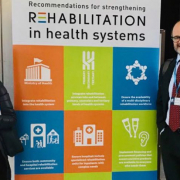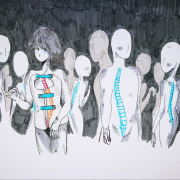WHO rehabilitation task force: Isico is also there
Some of Isico’s are part of an international project promoted by WHO (World Health Organization) which aims to draw up rehabilitation guidelines for all countries, including those in the developing world, available to all Ministries of Health.
These rehabilitation guidelines need to be applicable in any context, taking into account the economic means and therapeutic possibilities that differ from country to country.
A large-scale and very ambitious project, involving Isico with three specialists, namely Dr Fabio Zaina, Dr Sabrina Donzelli and Dr Francesca Di Felice.
The supervision is given by Prof Stefano Negrini, also involved as director of Cochrane Rehabilitation.
“In this process of developing guidelines, we were asked to deal specifically with back pain – explains Dr Zaina – in the first phase, already completed now, we dealt with the bibliographic research. In the second phase, we were asked to collect the scientific evidence in respect to the data collected so as to build the guidelines. At the moment we are working on the final phase: drawing up the guidelines, with great attention also to the sustainability of costs in different countries, and presenting them to the referents of the various countries for their application”.


